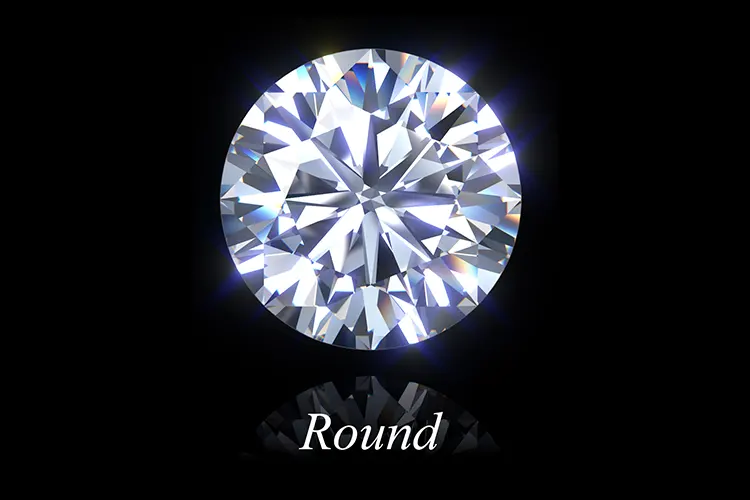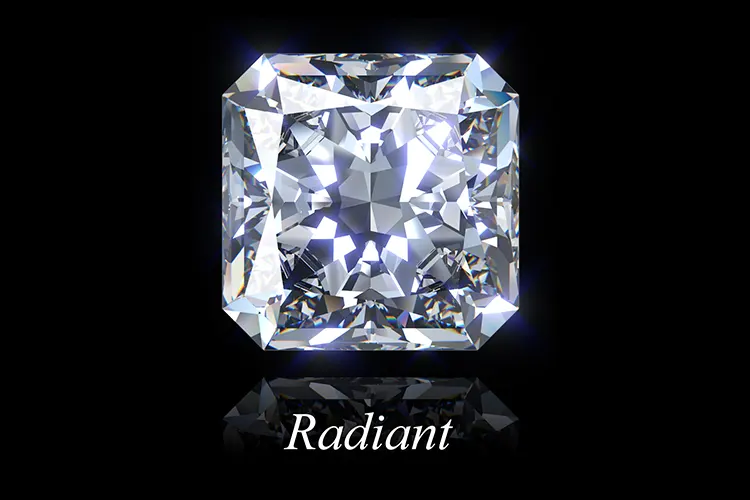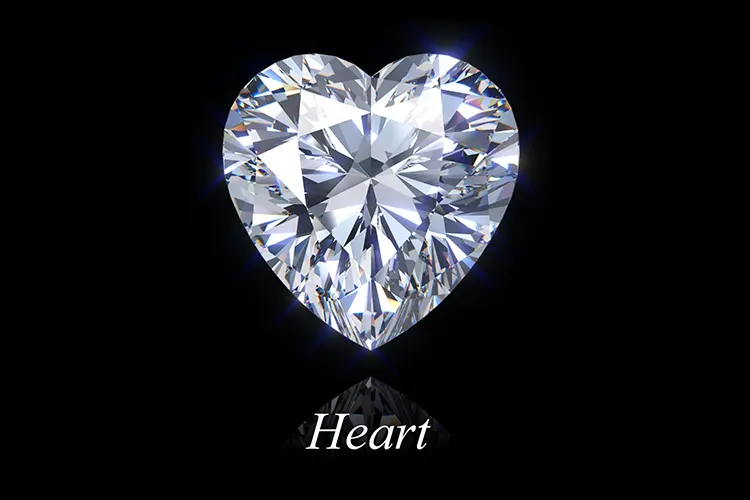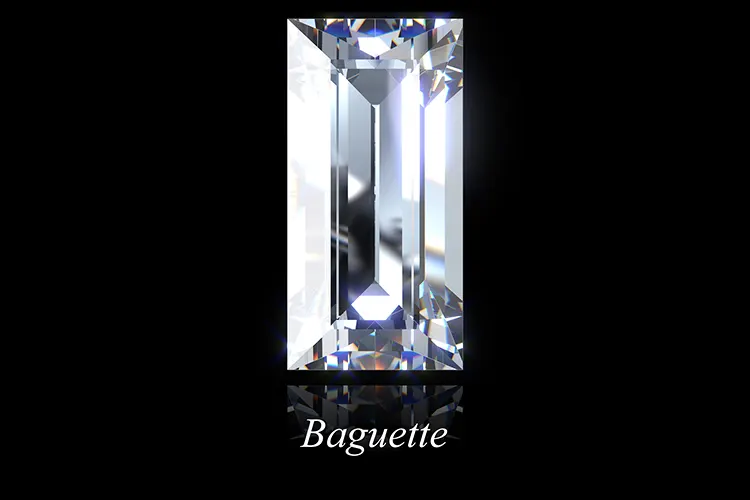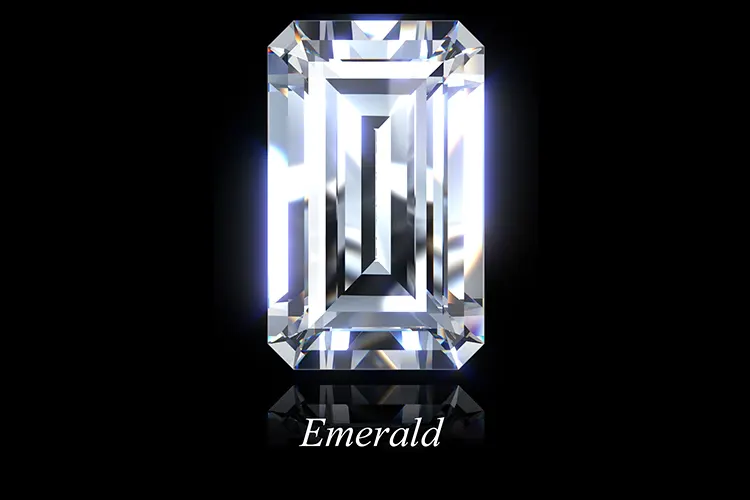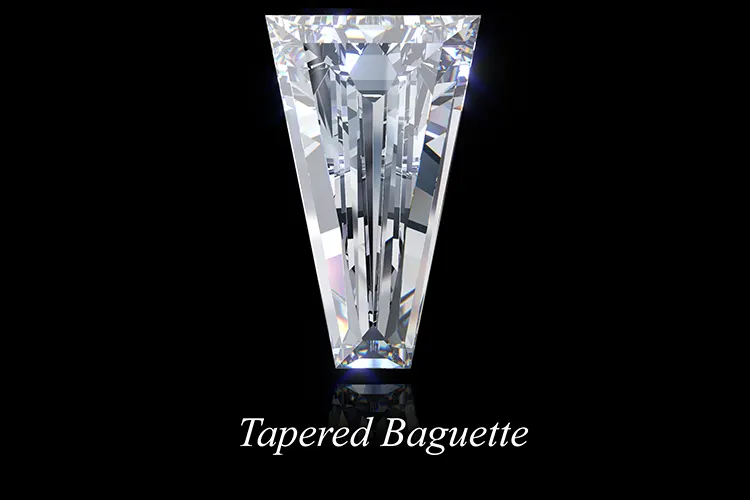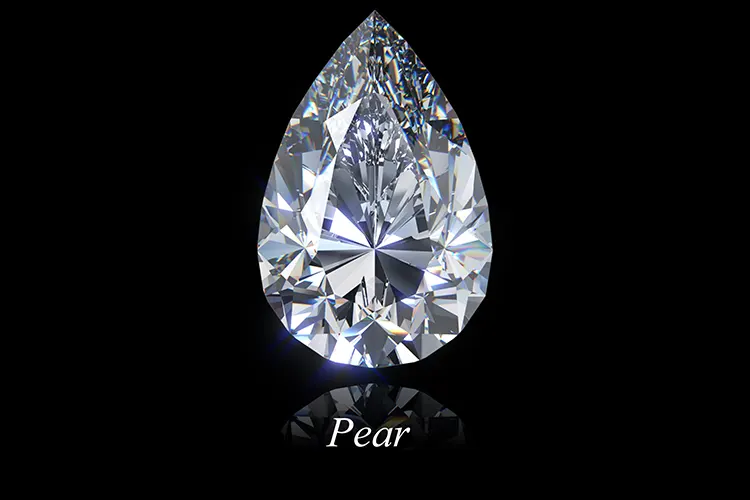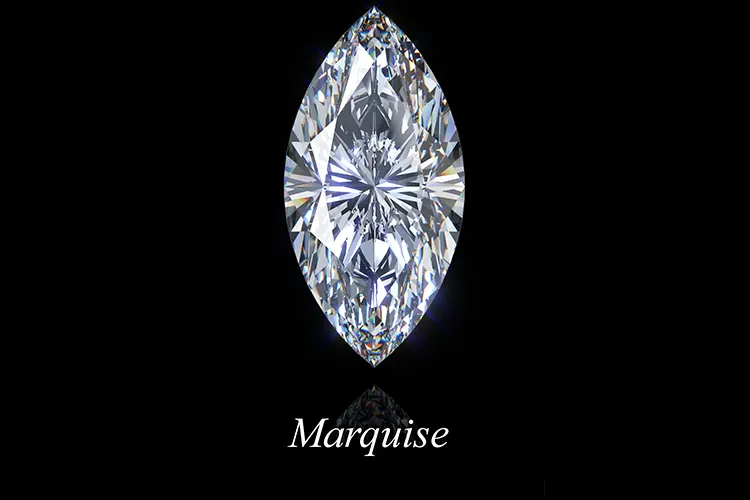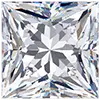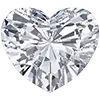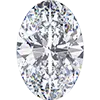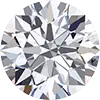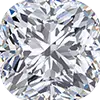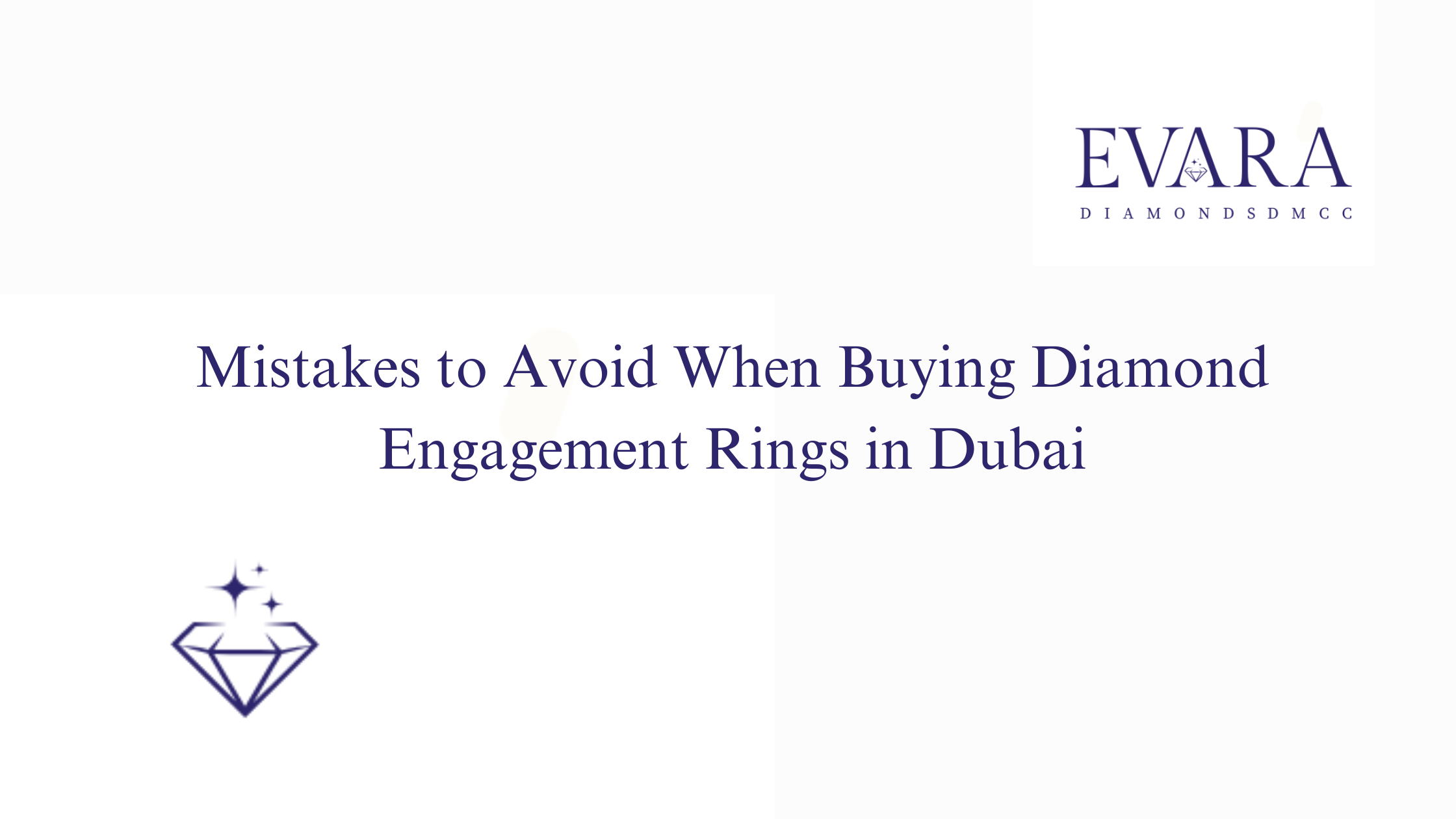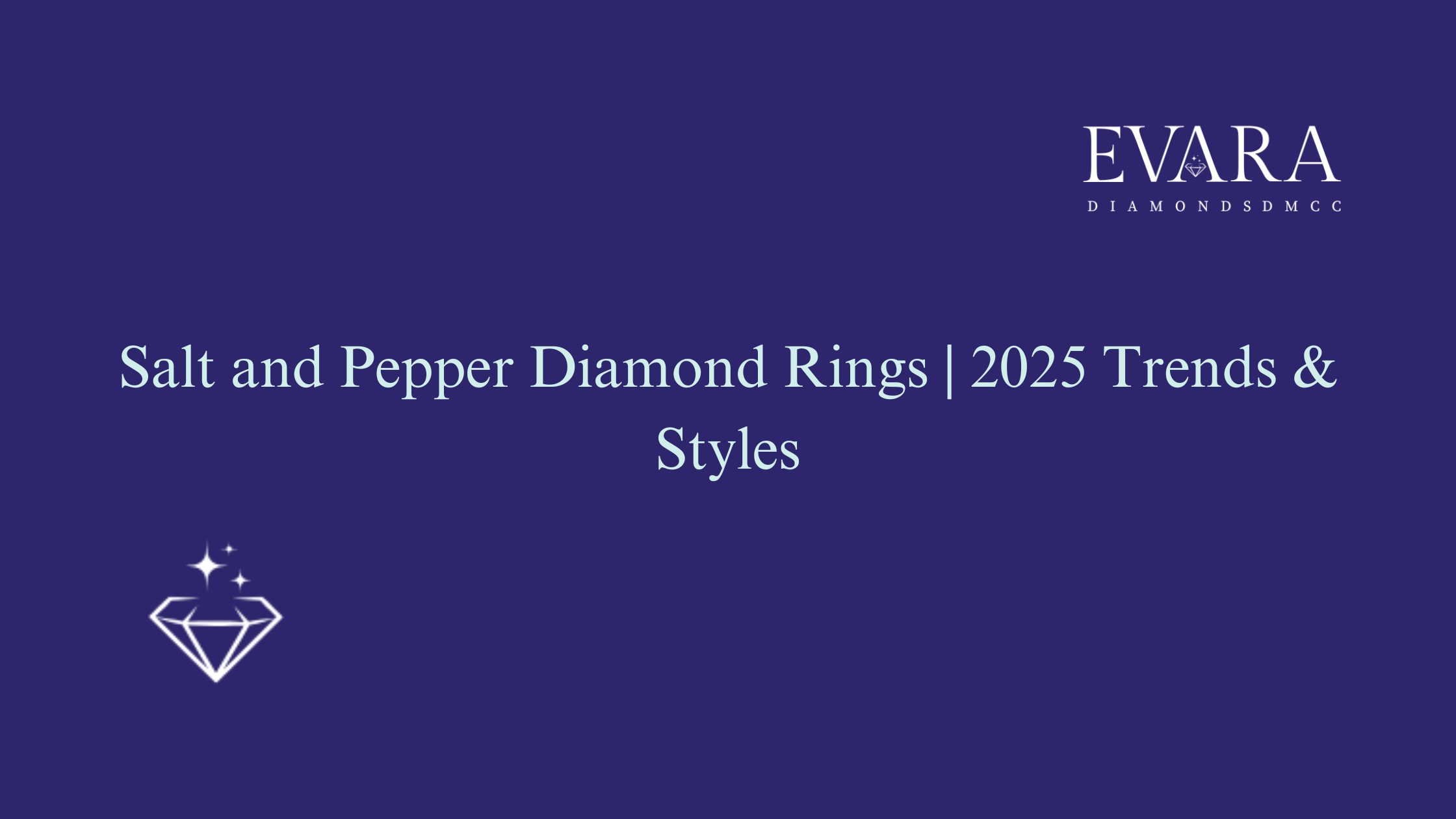Diamond Cuts
From Classic to Contemporary, Explore the Artistry of Diamond Cuts
Among the 4Cs of Diamond characteristics, Cut is the most complex and difficult to analyze. Despite being so tricky to understand, it is a pivotal factor in determining a diamond’s quality and value. Often misunderstood as a diamond’s shape, Cut is a different characteristic that determines how well the light interacts with diamond facets. It requires precise workmanship and great artistry to elegantly cut a diamond that reflects the light from the outer surface and bestows a brilliant sparkle.
Different grades are assigned to the diamond cut which assists in determining the quality and value of a diamond during the trade. While the “Excellent” grade is considered the ideal diamond, “Poor” is considered the lowest quality diamond in terms of cut. The right cut can transfigure the complete appearance of even a low-grade diamond and help it shine even brighter.
What are Diamond Cuts?

Diamonds when mined through the earth’s surface look quite rough, unable to reflect any light. A diamond spends a long time in the hands of a craftsman to get a perfect cut, shape, and polish. Diamond cutting removes the rough outer surface of the diamond and helps to reveal the beauty of the inner layer. There are a lot of things that are considered during the diamond cut as the process decreases the overall weight and size of the diamond. A balance has to be maintained between preserving the diamond’s weight and giving an excellent cut to the diamond.
The techniques of cutting a diamond have also revolutionized with time. Earlier, the cutting used to be done by hand which used to be very difficult, making the diamonds even costlier. Laser cut has substituted the traditional method where the diamonds can not be cut with excellent symmetry and polishing, making it easier to get the finest cut diamond without much hard work.
GIA Diamond Cut Grade
Just like the colors, GIA introduces the cutting grades for round brilliant cut diamond which starts at Excellent and ends at Poor grade. The diamond cut grade is assigned by considering a range of factors like symmetry, brilliance, polish, and fire. An excellent cut is the preference of anyone looking to buy a round brilliant diamond. Similarly, people with slightly less budget move to another grade of diamond cut.
However, getting an excellent cut diamond is not that rare as 55% of all round cut diamonds get an “Excellent” grade from GIA. There are chances that even the “Excellent” cut diamonds carry some bad specs like depth, table, and angle. The chart below is used worldwide to understand different grades for diamond cuts.
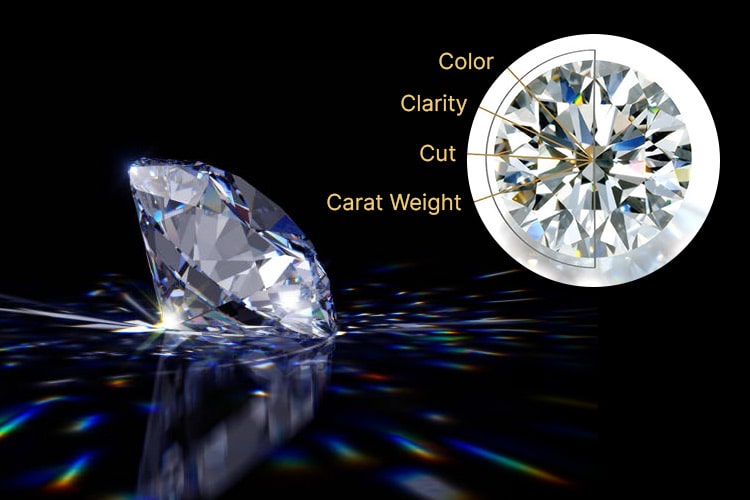
Ideal+Hearts
This is the best grade diamond which is only used for the Round Brilliant Cut diamonds. This is more than ideal cut in a diamond, bestowing perfect optical symmetry. This cut displays the hearts and arrow-shaped patterns when observed from the table down and up. There are only <1% of all the diamonds which fall in this category.
Ideal
Second comes the Ideal grade which is the second highest cut grade for Round Brilliant Cut diamonds. The focus during the ideal cut is to maximize the brilliance with perfect proportion. This diamond cut is also as rare as the Ideal+Heats diamond cut with quality held by only <1% of all the diamonds.
Excellent
Excellent cut diamonds are the most preferred buying diamonds due to their highest level of brilliance and fire. In Excellent cut diamonds, almost all the light is reflected through the table which provides a magnificent sparkle to the stone.
Very Good
Just below the Excellent cut are the diamonds with “Very Good” grades. These diamonds offer exceptional brilliance and fire as the majority of the light gets reflected. The naked eye can not identify the difference between diamonds with “Excellent”, and ”Very Good” cut grades.
Good
Good-cut diamonds are also considered valuable stones. They also have a good capability of reflecting the light and giving a good sparkle and bright look. These diamonds are the choices of people looking for a decent diamond with less price.
Fair
The light in fair-cut diamonds can exit through sides and bottoms, thus offering a little sparkle. This characteristic of fair-cut diamonds makes them the choice as side stones which helps to balance the overall cost of jewelry.
Poor
One should not expect a good sparkle from a poorly cut diamond as it offers no brilliance or fire. The light can escape from either side of the diamond and thus the brightness is not that sharp.
Types of Diamond Cuts
Cuts are something that makes the diamond rare or normal. While a piece of diamond can be adored by securing the prime space in the jewelry, another piece of the stone might end up being a supporting diamond.
Everything depends on the color and cut. While you might get confused between the different diamond cuts described over the internet, here are the three different core cuts that are prominent around the world for different purposes.
Brilliant Cut
The triangular and kite-shaped facets spreading outward from the center of the diamonds represent the brilliant cut of the diamond. When reflecting the light, the brilliant-cut diamond will appear similar to crushed ice or a prism with the naked eye.
Brilliant cut is more prominent in round-shaped diamonds while sometimes can also be observed in other-shaped diamonds. For example, Cushion, Oval, Marquise, Pear, and Trillion cut diamonds have brilliant cuts.
Step Cut
Unlike brilliant cut, Step Cut fosters the rectangular facets which increases the size of the diamond as we go upward while decreasing the diamond size when moving downwards. The facts in step cut are linear and long which creates a “hall of mirror” effect while reflecting the light. Emerald, Asscher, and Baguette diamonds are preferred for step cuts.
Mixed Cut
As the name suggests, when both brilliant and step-cut practices are fostered in the diamond, it is called the mixed-cut diamond. This cut is more featured in princess, radiant, cushion, and newer cut diamond shapes. The diamond resembles crushed ice when reflecting the light.
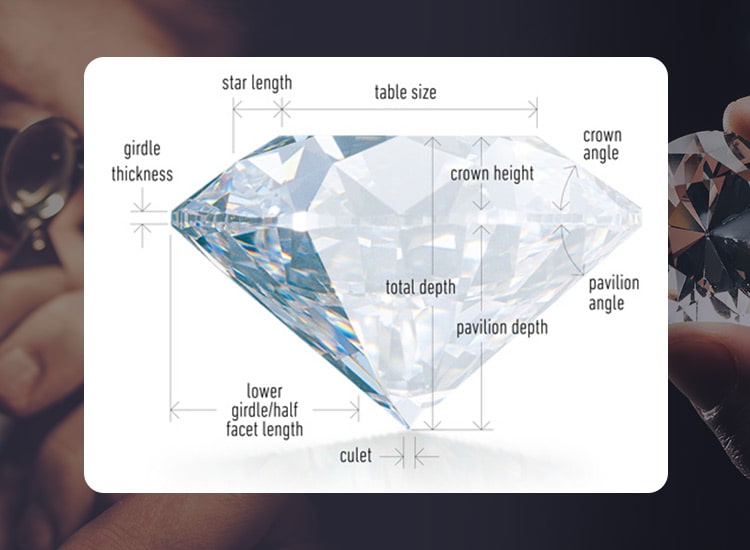
Best Diamond Cut
The best diamond cut is the one that maximizes the light striking each pavilion of the diamond. However, it is important that the diamond only reflects through the table and crown of the diamond instead of sides and any other angles. It helps the stone shine even brighter and bestows a sparkling look. When considering the grades of a diamond cut, Excellent Cut diamonds are considered the best and most preferred choices among all the other cuts.
Excellent cut diamonds are well-proportioned with the optimal facet angles which allow the brilliance to pass through the table. This cut provides a more bright look to the diamond, making it more valuable and luminous for the buyers. A small diamond with an excellent cut is considered a better choice than a large diamond with a poor cut.
Factors that Affect a Diamond Cut
Cut is itself a factor that affects the price of a diamond. Still, several factors affect the diamond cut, its quality, and its value. Proportions, finishing details, facets, and many other factors bring a perfect cut into the diamond and multiply its ability to reflect light. The better are these factors, the higher the quality of the cut and diamond, and thus higher the prices.
Diamond Cut Proportional
Diamond proportions consist of table, width, and depth which play a significant role in determining the perfection of a diamond cut. All these elements are measured for the excellent indicator.
The diamond cut proportion has a direct impact on the diamond’s ability to reflect light and thus show a sparkle. These elements are based on the ratio between the shape, size, and angle of each diamond. Different diamond shapes have different proportions.
Diamond Table
Diamond table % is a value that can be determined by dividing the width of the table (top surface area) by the width of the diamond. In case the diamond table % is too high, it increases the top surface area and light will not reflect off the facets and angles. So, the normal human eye won’t see the diamond shining too bright.
Similarly, if the table % is too low, the light won’t be able to exit at all which will eliminate the sparkling effect of the diamond. The right table % measurement depends entirely on the size of the diamond.
Diamond Width
As the name suggests, the width of the diamond is measured by calculating the millimeters from one end of its girdle to the other end of the girdle. This is one of the most important measurements when determining the ratio between width and length.
This ratio is calculated by dividing the length of the diamond by the width of the diamond.
Diamond Depth
Depth is also known as the height of the diamond which is measured from the culet to the top of the table in the diamond. The measurement is taken in percentages and millimeters. The percentages are measured by dividing the depth by the width of the diamonds.
If a diamond depth % is too low, it can make the diamond look too dark as it might not be able to reflect properly.
Shallow Diamond Cut
Too shallow-cut diamonds make the light hit the pavilion at a low angle and thus the complete light exits through the sides of the diamond. As long as the light is not exiting from the diamond table, it doesn’t seem sparkling to human eyes.
Due to the large table size, diamonds with shallow cuts appear larger in size. However, the escape of light from the sides and bottom makes it look dull and less bright.
Deep Diamond Cut
Light hits the pavilion at a sharper angle in the deep-cut diamond. It makes the light immediately reflect to another pavilion. In this diamond cut, the light tends to pass through the diamond bottom. So the light is dulled, making the diamond even less brighter.
At the same time, a deep diamond cut makes the stone look smaller as compared to the ideal cut.
Things to consider in Diamond Cut when purchasing a Diamond
Choosing the right-cut diamond can save you a lot of dollars according to your jewelry requirements. While one might not be in touch with a diamond expert all the time, taking care of a few recommendations will ensure that some diamond sellers in the market don’t ditch you with your money.
You should buy
- Look for a round brilliant diamond when searching for the most brilliance and bright stone
- Consider only the GIA Excellent cut grades for a round brilliant diamond
- In the case of fancy-shaped diamonds, you must see the high-quality image of the diamond before making a purchase
- Choose the diamonds that portray proportions, symmetry, and many dark spots
You should avoid
- You should not compromise with the diamond cut to save money as you might end up with some underwhelming diamonds.
- You should not buy a diamond that comes without a certificate from a relevant entity like GIA.
- Don’t buy the diamonds which are too shallow or too deep. It restricts the light refraction.
Diamond Cut and Diamond Shape
While many people confuse between the diamond cut and diamond shape, both the terms and factors are entirely different. Similarly, GIA also accepts a great difference between both terminologies when considered according to the 4C’s of diamonds.
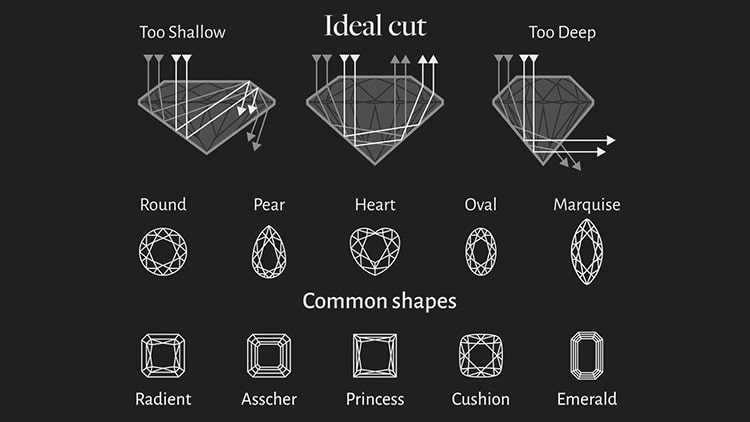
The Shape of the diamond has more to do with the outline and figure of the diamond which includes the different options like pear, oval, and round brilliant.
Cut, on the other hand, refers to the symmetry, dimension, and facet-related qualities of the diamond. For example, a pear-shaped diamond can be cut shallow, deep, brilliant, and dull. The cut grade in the diamond is directly proportional to the brilliance and fire of the diamond.
Our Diamonds
How to Choose a Diamond Cut?
When choosing a perfect diamond for your jewelry, it needs multiple factors to be taken into consideration. Diamond cut is one and most important among those factors.
First of all, dedicate a particular budget that you are keening to invest in your piece of diamond. It will help you decide the diamond shape, diamond setting, and carat weight.
If your budget is decent enough, you will get choices to select among the different diamond shapes. For example, a low budget will suggest you choose a stone that looks adorable in lower-cut grades like Asscher or Emerald cut diamond. Similarly, other cuts like princess cut, radiant cut diamond, and round brilliant diamonds seek better cuts and somewhat higher budgets. Here, the cut grade is a more prominent factor among all the 4Cs of the diamond.
At the same time, choosing the right diamond seller can help you significantly to get the best out of your budget in terms of cut, shape, carat weight, and all the other factors.
Polish, and Symmetry
Diamond cut is followed by Polish and Symmetry which impacts the overall interaction of light with the diamond and determines the charm of a stone.
Polish is a process where the diamond surface is made smoother. When a diamond doesn’t get an excellent cut, polish is a great catalyst that can eliminate the small imperfections of the stone to make it look perfect. The polish can be applied to any grade of diamond to make the light enter and exit the diamond from the right facets and give a strong charm to the diamond
Symmetry is the measurement of how well all the diamond’s facets align with each other. As long as all the diamond facets are not well-aligned, the light entering the stone will be misdirected to suppress all the reflection. Diminishing the sparkle of the diamond, makes the precious stones look dull. Just like the diamond cut, diamond symmetry is also graded on a scale from excellent to poor. Off-center tables, unaligned facets, along with missing facets can eventually bring down the value of the diamond.
The diamonds with excellent cut, symmetry, and polish are graded as Triple Excellent or Triple X. However, advancements in technology have made it easier for diamond artists to make triple-excellent diamonds. This category of diamond is considered the ideal choice for engagement rings and other pieces of jewelry for special occasions.
Evaluate Diamond Cuts Online
Purchasing a diamond from the online store can be one of the best decisions to get the worth for the spending. However, each customer has a concern regarding the qualities and effective analysis of the diamond. For the same, one should always read the complete information about the diamond provided by the retailer. The good diamond retailers on the online landscape provide sufficient information as compared to offline providers that help the buyer to make the instant and right decision.
Moreover, many diamond retailers provide a consultation option where you can talk to their diamond experts in real-time, share your queries about the diamond, and get the perfect piece of precious stone within your budget.
FAQ –
How are diamonds cut?
Generally, the diamonds are cut by two methods. The first one is cleaving and another method is sawing the diamond with a laser or steel blade. Cleaving is used when a diamond has a weak spot. The diamond is placed into the mold to hold it and cleaved at the rough points. If the diamond is hard from all sides, the sawing method is used.
The process is undertaken by master craftsmen which graded by the gemolists. It needs a skilled and experienced craftsman to cut a diamond perfectly.
Which diamond cut bestows the most sparkle?
Among all the different diamond cuts, the Round Brilliant cut is considered the most brilliant, providing the most spark. Brilliant cut is followed by the mixed cut that helps to elevate the clarity of the diamond and provide a sharp brightness to the diamond when the light is passed through the stone.
Which is the most expensive diamond cut?
Ideal+Hearts when fostered into the round brilliant cut is considered the most expensive diamond cut. This cut is always high in demand which increases the price of this choice and makes it one of the most expected types of cuts in a diamond. Step-cut diamonds are comparatively cheaper than the former due to the difference in demand, cutting process, and preferences.
What is more important between diamond cut and diamond clarity?
Diamond cut is undoubtedly more important as compared to diamond clarity when talking about brilliance and sparkle. Whenever buying a diamond, it is important to pick an excellent-cut diamond rather than a stone with higher clarity.
Are full-cut diamonds good?
Full-cut diamonds are prominent for their beauty, versatility, brilliance, and enduring appeal. This category of diamond is the foremost choice for anyone looking for the finest pieces of diamonds for their jewelry.
Shop Diamonds by Shape
50+years of excellence in the diamond industry
Recent Blogs
We provide valuable insights and knowledge for those who are interested in purchasing or simply learning more about these exquisite gems.
